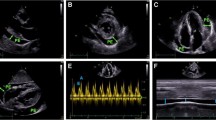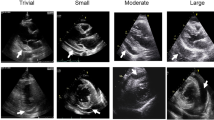Opinion statement
Prompt recognition of the signs and symptoms of pericardial disease is critical so that appropriate treatments can be initiated. Acute pericarditis has a classical presentation, including symptoms, physical examination findings, and electrocardiography abnormalities. Early recognition of acute pericarditis will avoid unnecessary invasive testing and prompt therapies that provide rapid symptom relief. Non-steroidal anti-inflammatory drugs (NSAIDs) remain first-line therapy for uncomplicated acute pericarditis, although colchicine can be used concomitantly with NSAIDS as the first-line approach, particularly in severely symptomatic cases. Colchicine should be used in all refractory cases and as initial therapy in all recurrences. Aspirin should replace NSAIDS in pericarditis complicating acute myocardial infarction. Systemic corticosteroids can be used in refractory cases or in those with immune-mediated etiologies, although generally should be avoided due to a higher risk of recurrence. Pericardial effusions have many etiologies and the approach to diagnosis and therapy depends on clinical presentation. Pericardial tamponade is a life-threatening clinical diagnosis made on physical examination and supported by characteristic findings on diagnostic testing. Prompt diagnosis and management is critical. Treatment consists of urgent pericardial fluid drainage with a pericardial drain left in place for several days to help prevent acute recurrence. Analysis of pericardial fluid should be performed in all cases as it may provide clues to etiology. Consultation of cardiac surgery for pericardial window should be considered in recurrent cases and may be the first-line approach to malignant effusions, although acute relief of hemodynamic compromise must not be delayed. Constrictive pericarditis is associated with symptoms that mimic many other cardiac conditions. Thus, correct diagnosis is critical and involves identification of pericardial thickening or calcification in association with characteristic hemodynamic alterations using noninvasive and invasive diagnostic approaches. Constrictive physiology may occur transiently and resolve with medical therapy. In chronic cases, definitive therapy requires referral to an experienced surgeon for pericardiectomy.

Similar content being viewed by others
References and Recommended Reading
Papers of particular interest, published recently, have been highlighted as: • Of importance
Watkins MW, LeWinter MM. Physiologic role of the normal pericardium. Annu Rev Med. 1993;44:171–80.
Faridah Y, Julsrud PR. Congenital absence of the pericardium revisited. Int J Cardiovasc Imag. 2002;18:67–73.
Farand P, Bonenfant F, Belley-Cote EP, Tzouannis N. Acute and recurring pericarditis: More colchicine, less corticosteroids. World J Cardiol. 2010;2(12):402–7.
Lotrionte M et al. International collaborative systemic review of controlled clinic trials on pharmacologic treatments for acute pericarditis and its recurrences. Am Heart J. 2010;160(4):662–70.
Maisch B, Ristic AD. The classification of pericardial disease in the age of modern medicine. Curr Cardiol Rep. 2002;4(1):13–21.
Spodick DH. Risk prediction for pericarditis: who to keep in hospital? Heart. 2008;94:398–9.
Maisch B et al. Guidelines on the diagnosis and management of pericardial diseases executive summary. Euro Heart J. 2004;25:587–610.
Khandaker MH et al. Pericardial disease: diagnosis and management. Mayo Clin Proc. 2010;85(6):572–93.
Imazio M et al. Colchicine in addition to conventional therapy for acute pericarditis: results of the Colchicine for acute pericarditis (COPE) trial. Circulation. 2005;112:2012–6.
Imazio M et al. Colchicine as first-choice therapy for recurrent pericarditis: results of the CORE (Colchicine for Recurrent Pericarditis) trial. Arch Intern Med. 2005;165:1987–91.
Artom G et al. Pretreatment with corticosteroids attenuates the efficacy of colchicine in preventing recurrent pericarditis: a multi-centre all-case analysis. Eur Heart J. 2005;26:723–7.
Imazio M et al. Medical therapy of pericardial diseases: part I: idiopathic and infectious pericarditis. J Cardiovasc Med. 2010;11(10):712–22.
Maxwell CB, Crouch MA. Intrapericardial triamcinolone for acute pericarditis after electrophysiologic procedures. Am J Health Syst Pharm. 2010;67(4):269–73.
Eisenberg MJ, de Romeral LM, Heidenreich PA, Schiller NB, Evans Jr GT. The diagnosis of pericardial effusion and cardiac tamponade by 12-lead ECG. A technology assessment. Chest. 1996;110(2):318–24.
Curtiss EI, Reddy PS, Uretsky BF, Cecchetti AA. Pulsus paradoxus: definition and relation to the severity of cardiac tamponade. Am Heart J. 1988;115(2):391–8.
Moores DWO et al. Subxiphoid pericardial drainage for pericardial tamponade. J Thorac Cardiovasc Surg. 1995;109:546–52.
Lestuzzi C. Subxiphoid pericardial drainage for pericardial tamponade. World J Cardiol. 2010;2(9):270–9.
Liu G, Crump M, Goss PE, Dancey J, Shepherd FA. Prospective comparison of the sclerosing agents doxycycline and bleomycin for the primary management of malignant pericardial effusion and cardiac tamponade. J Clin Oncol. 1996;14(12):3141–7.
Thai V, Oneschuk D. Malignant pericardial effusion treated with intrapericardial bleomycin. J Palliat Med. 2007;10(2):281–2.
Kunitoh H et al. A randomised trial of intrapericardial bleomycin for malignant pericardial effusion with lung cancer (JCOG9811). Br J Cancer. 2009;100(3):464–9.
Maruyama R et al. Catheter drainage followed by the instillation of bleomycin to manage malignant pericardial effusion in non-small cell lung cancer: a multi-institutional phase II trial. J Thorac Oncol. 2007;2(1):65–8.
Kralstein JMD, Frishman WMD. Malignant pericardial diseases: diagnosis and treatment. Amer Heart J. 1987;113(3):785–90.
Lima JAC, Desai MY. Cardiovascular magnetic resonance imaging: current and emerging applications. JACC. 2004;44:1164–71.
Yared K et al. Multimodality imaging of pericardial disease. JACC Imaging. 2010;3:650–60.
Talreja DR, Nishimura RA, Oh JK, Holmes DR. Constrictive pericarditis for the modern era: Novel critera for diagnosis in the cardiac catheterization laboratory. JACC 2008; 51(3): 315–19.
Imazio M et al. Medical therapy of pericardial diseases: part II: noninfectious pericarditis, pericardial effusion and constrictive pericarditis. J Cardiovasc Med. 2010;11(11):785–94.
Ling LH et al. Constrictive pericarditis in the modern era: evolving clinical spectrum and impact on outcome after pericardiectomy. Circulation. 1999;100(13):1380–6.
Sparano DM, Kohli P, Gulati M. A 63 year old women with a pericardial effusion, bilateral pleural effusions, and ascites: is the whole greater than the sum of its parts? Echocardiography. 2010;27:454–9.
Disclosure
No conflicts of interest relevant to this article were reported.
Author information
Authors and Affiliations
Corresponding author
Rights and permissions
About this article
Cite this article
Sparano, D.M., Ward, R.P. Pericarditis and Pericardial Effusion: Management Update. Curr Treat Options Cardio Med 13, 543–555 (2011). https://doi.org/10.1007/s11936-011-0151-8
Published:
Issue Date:
DOI: https://doi.org/10.1007/s11936-011-0151-8




